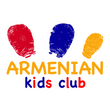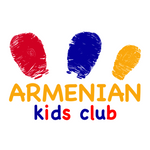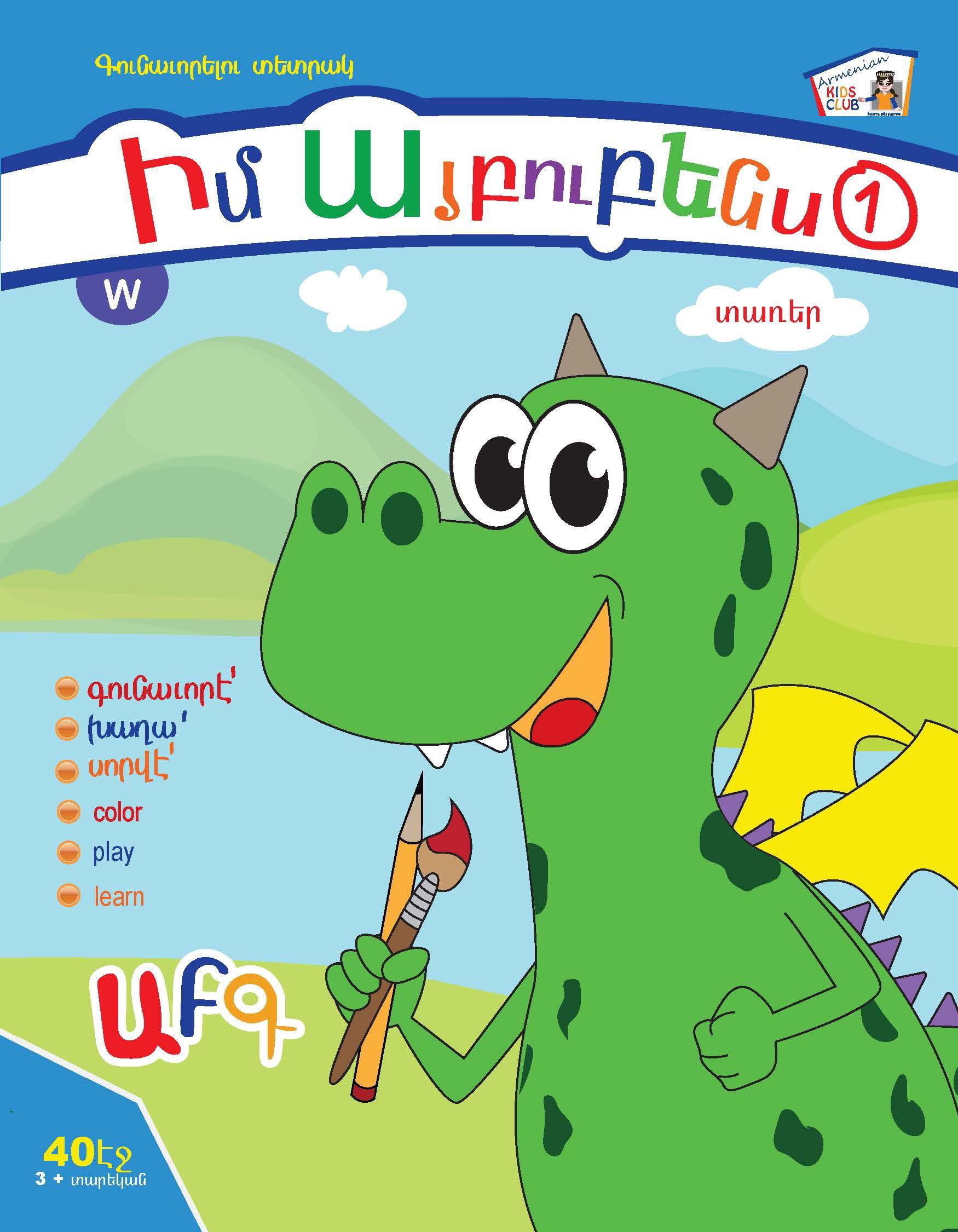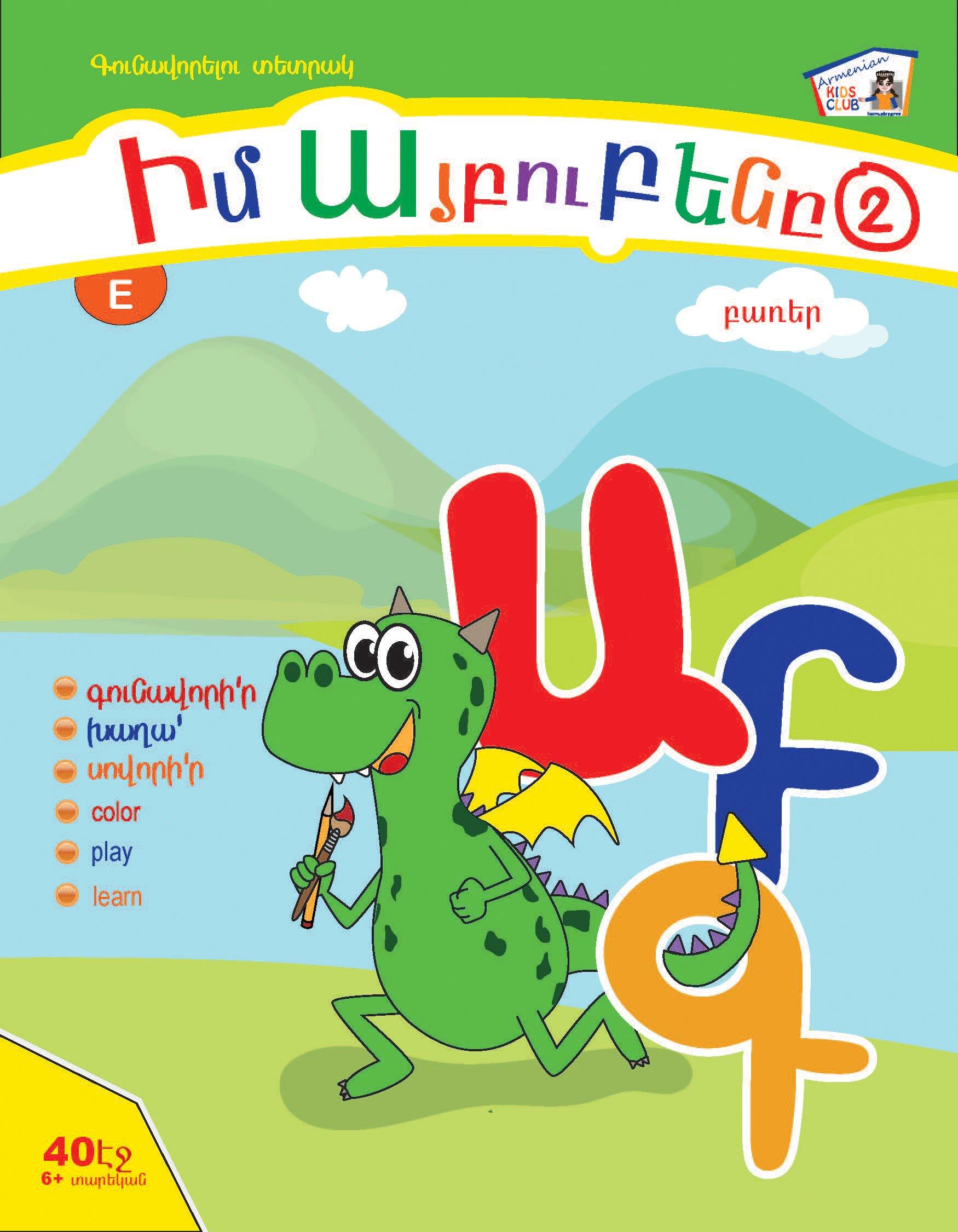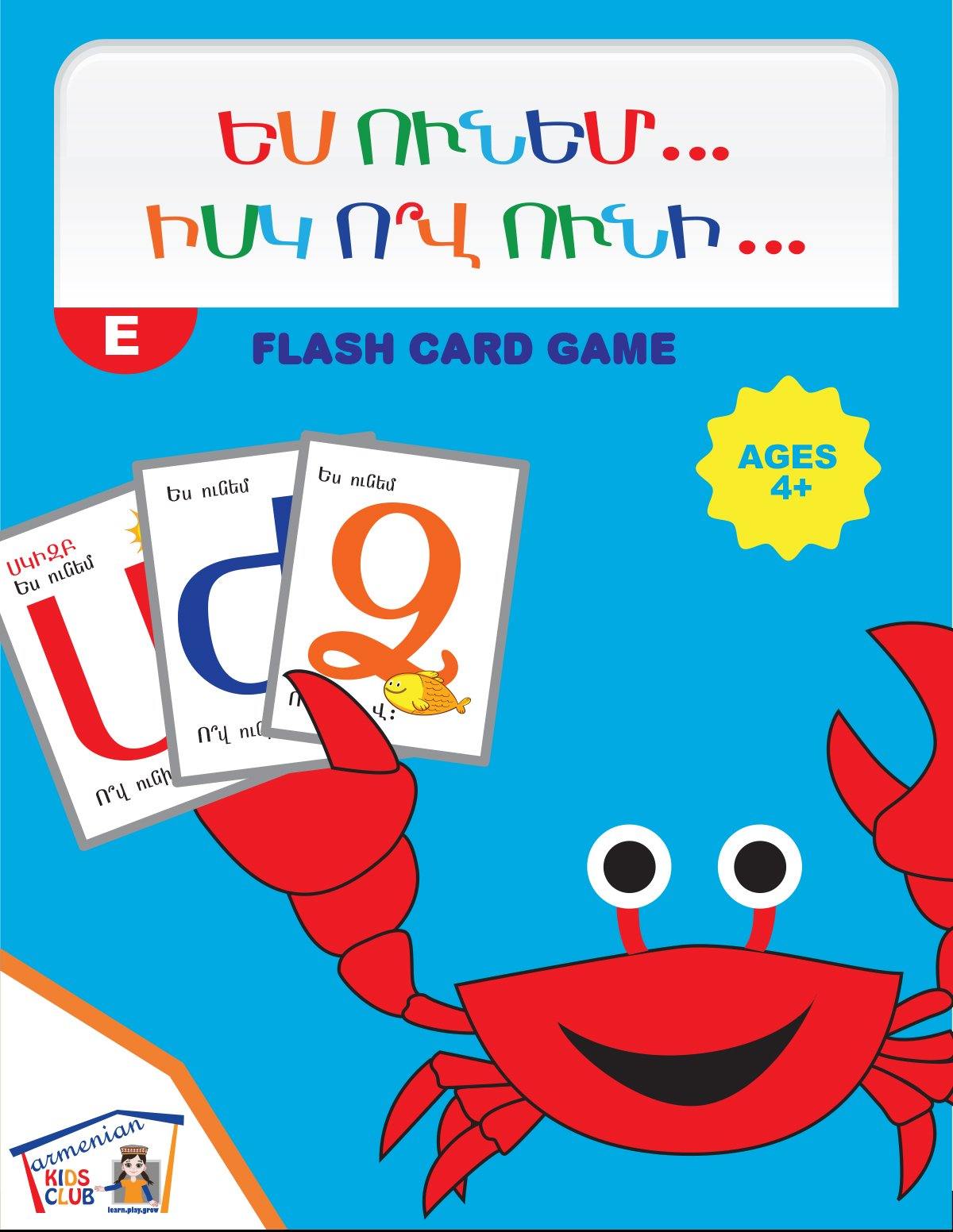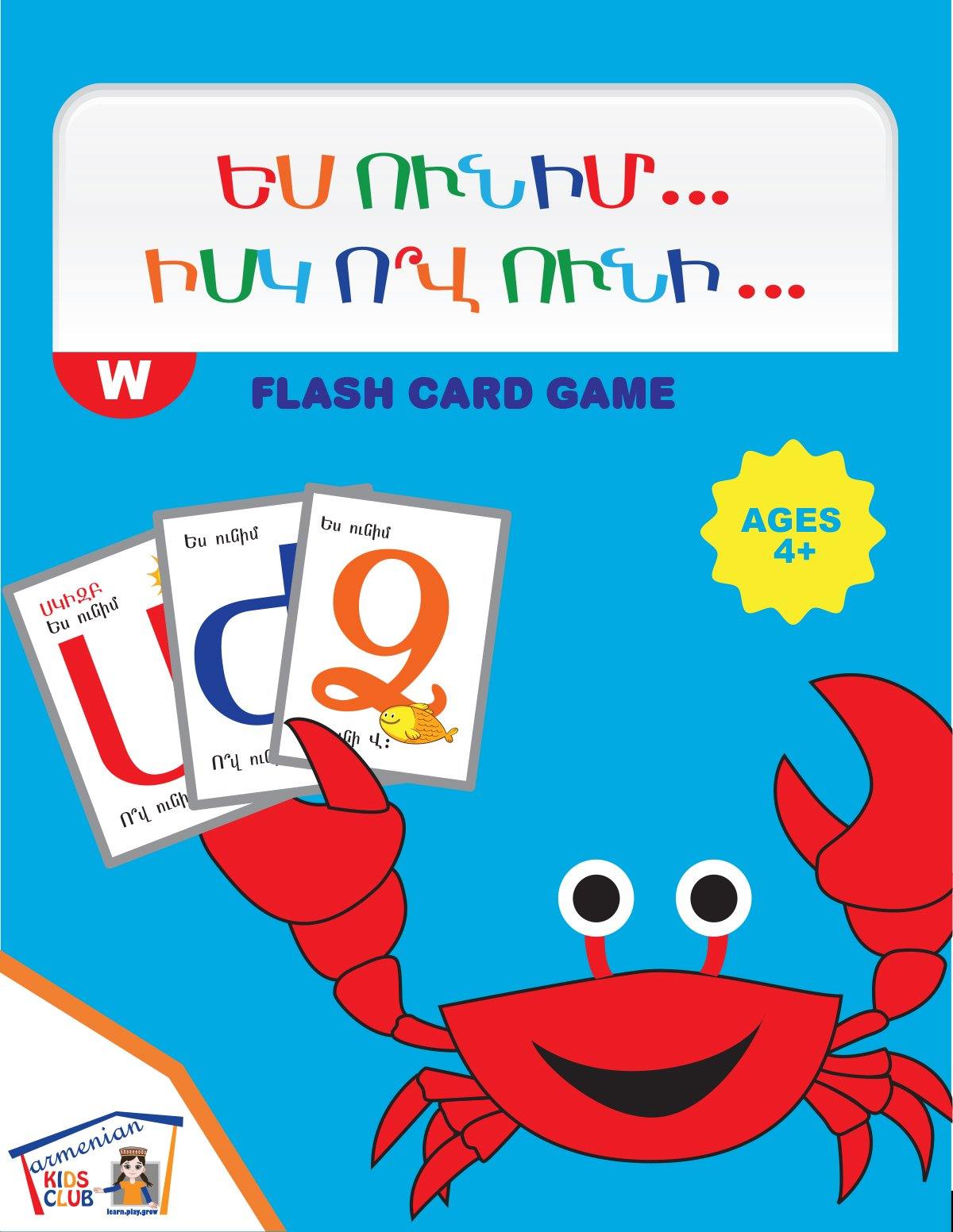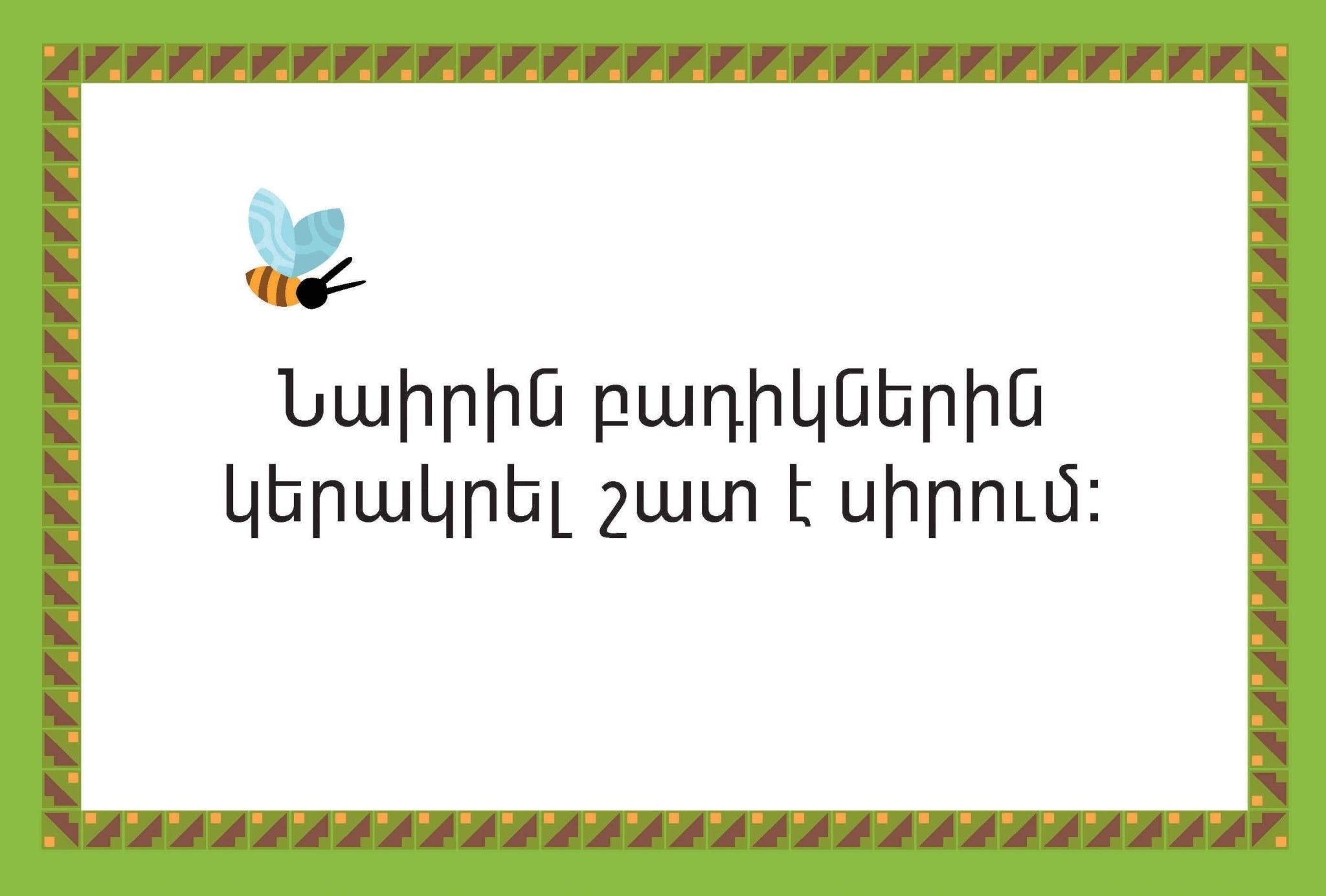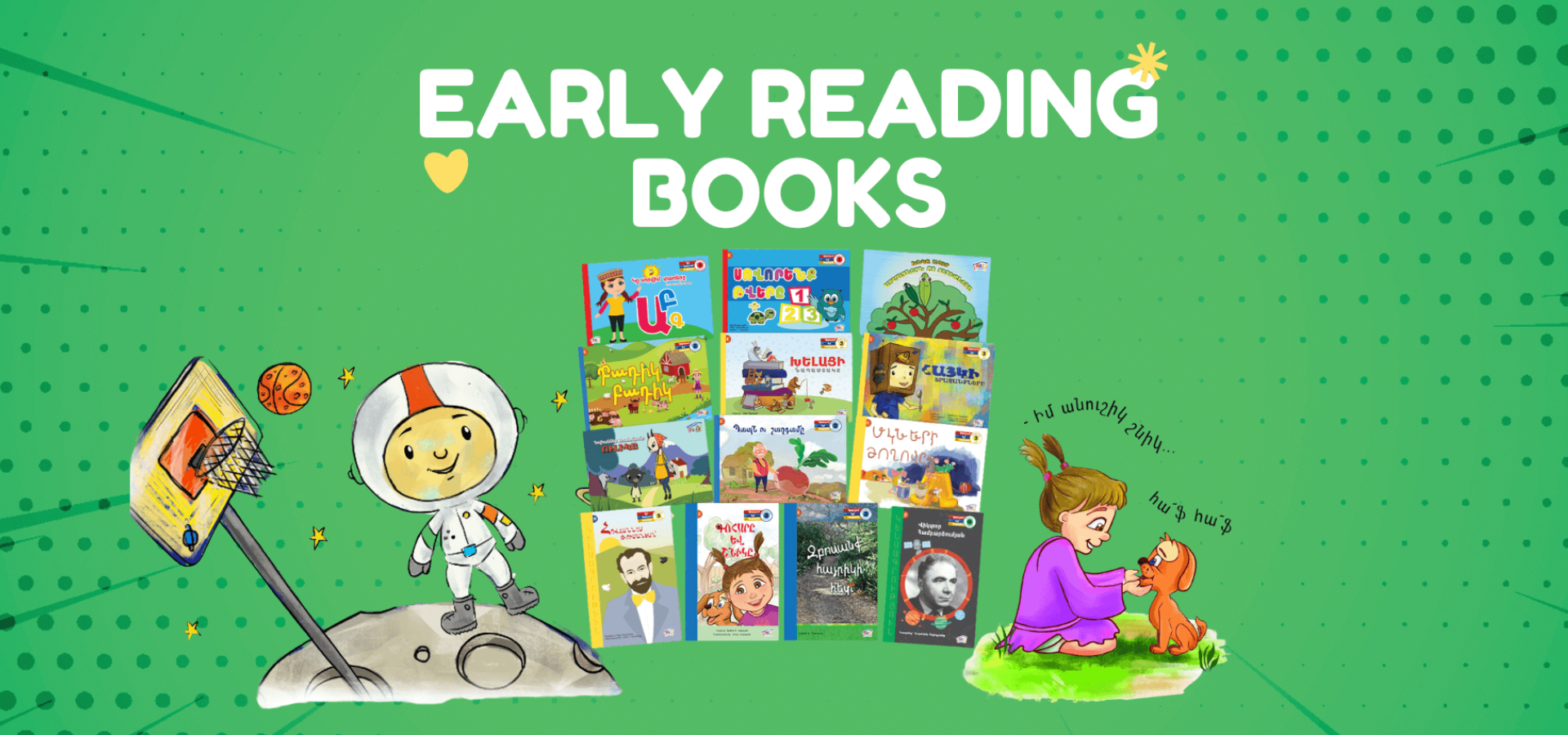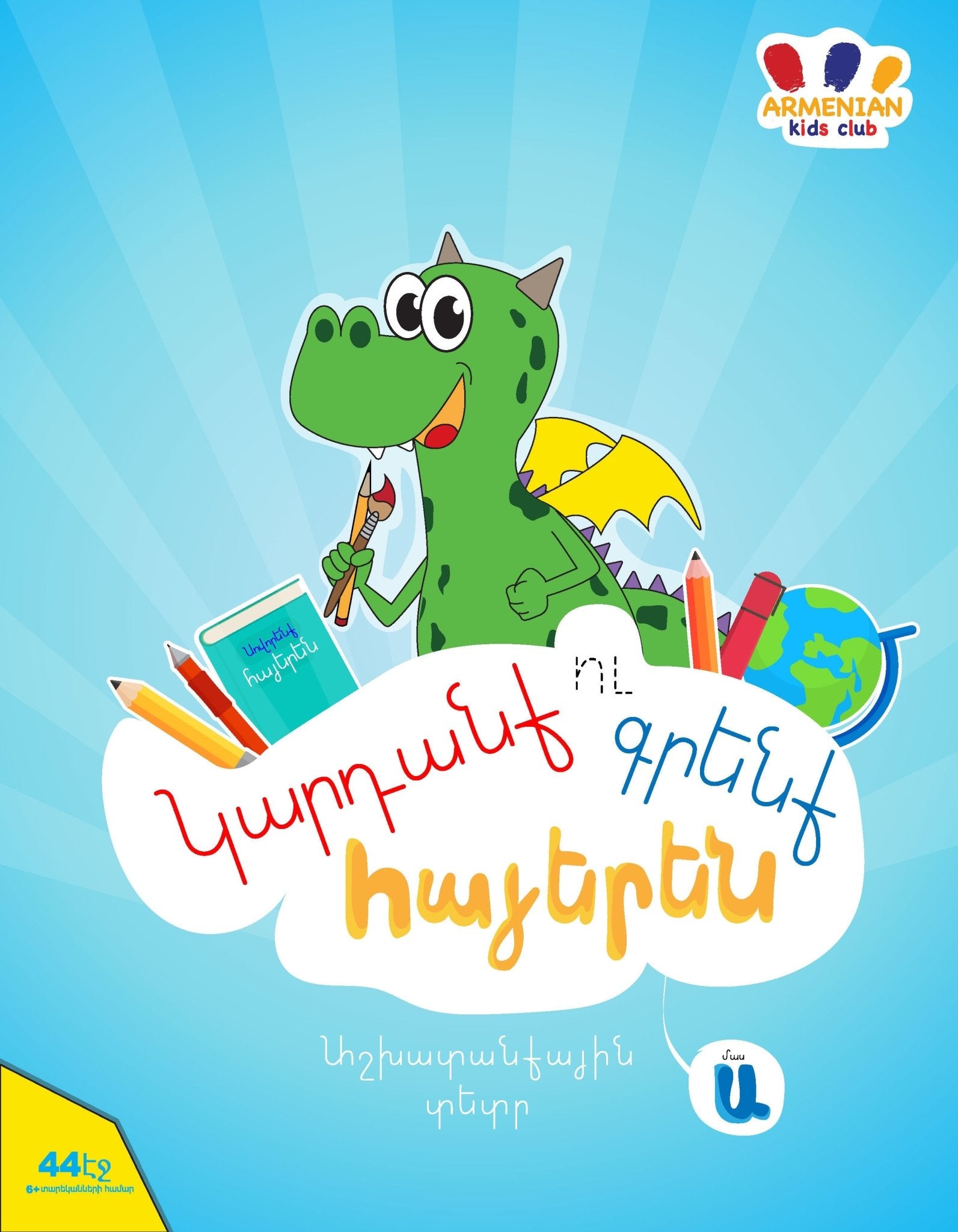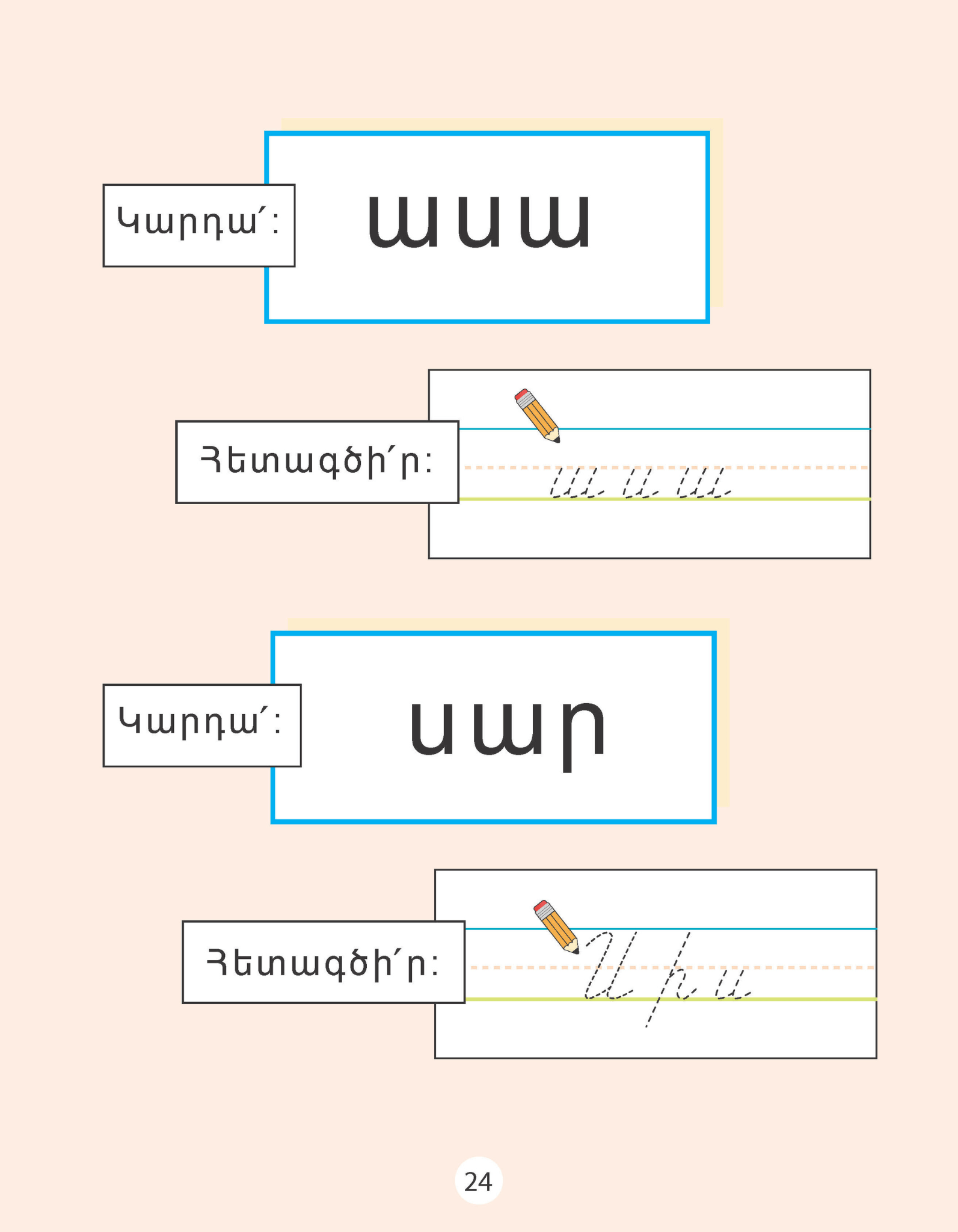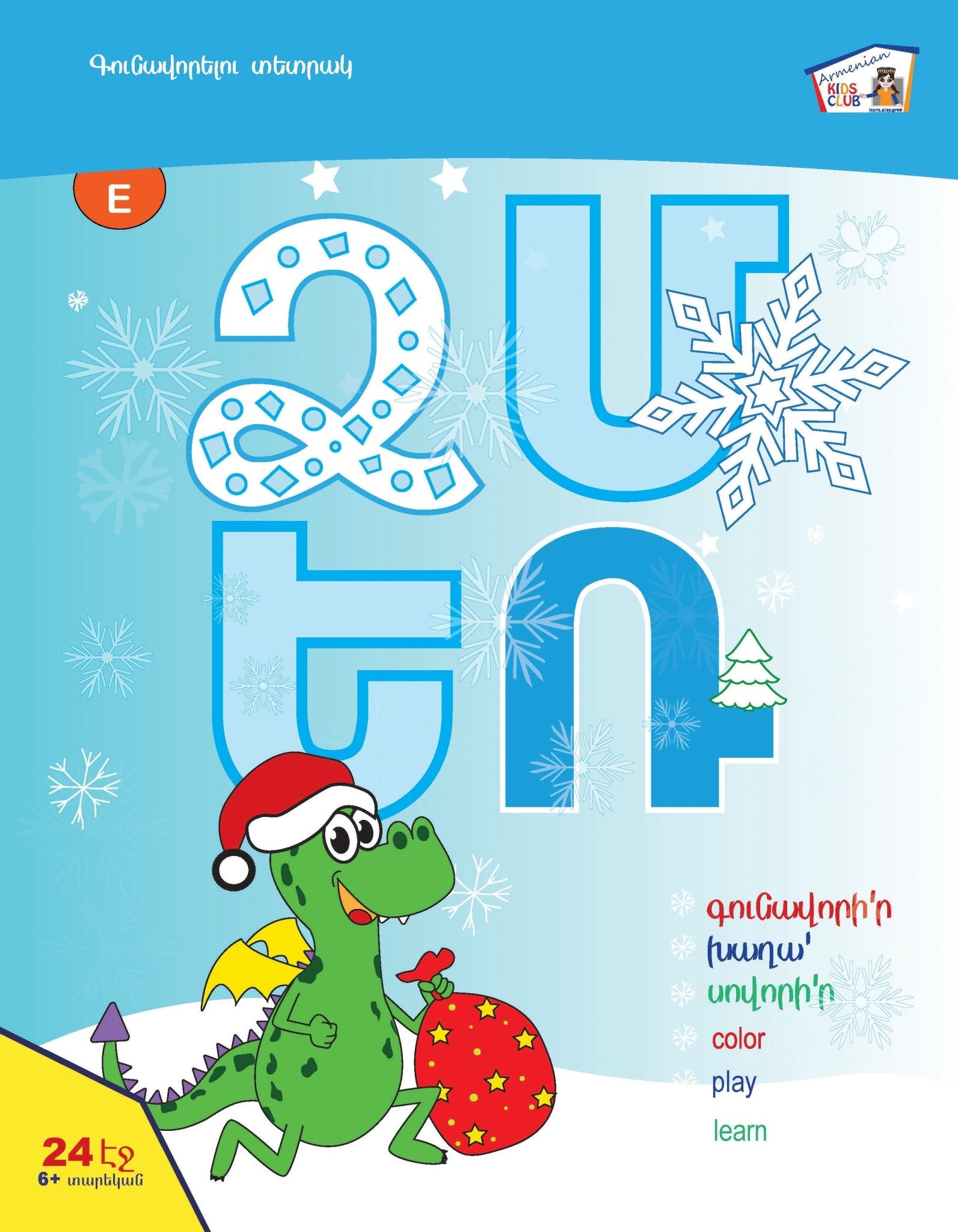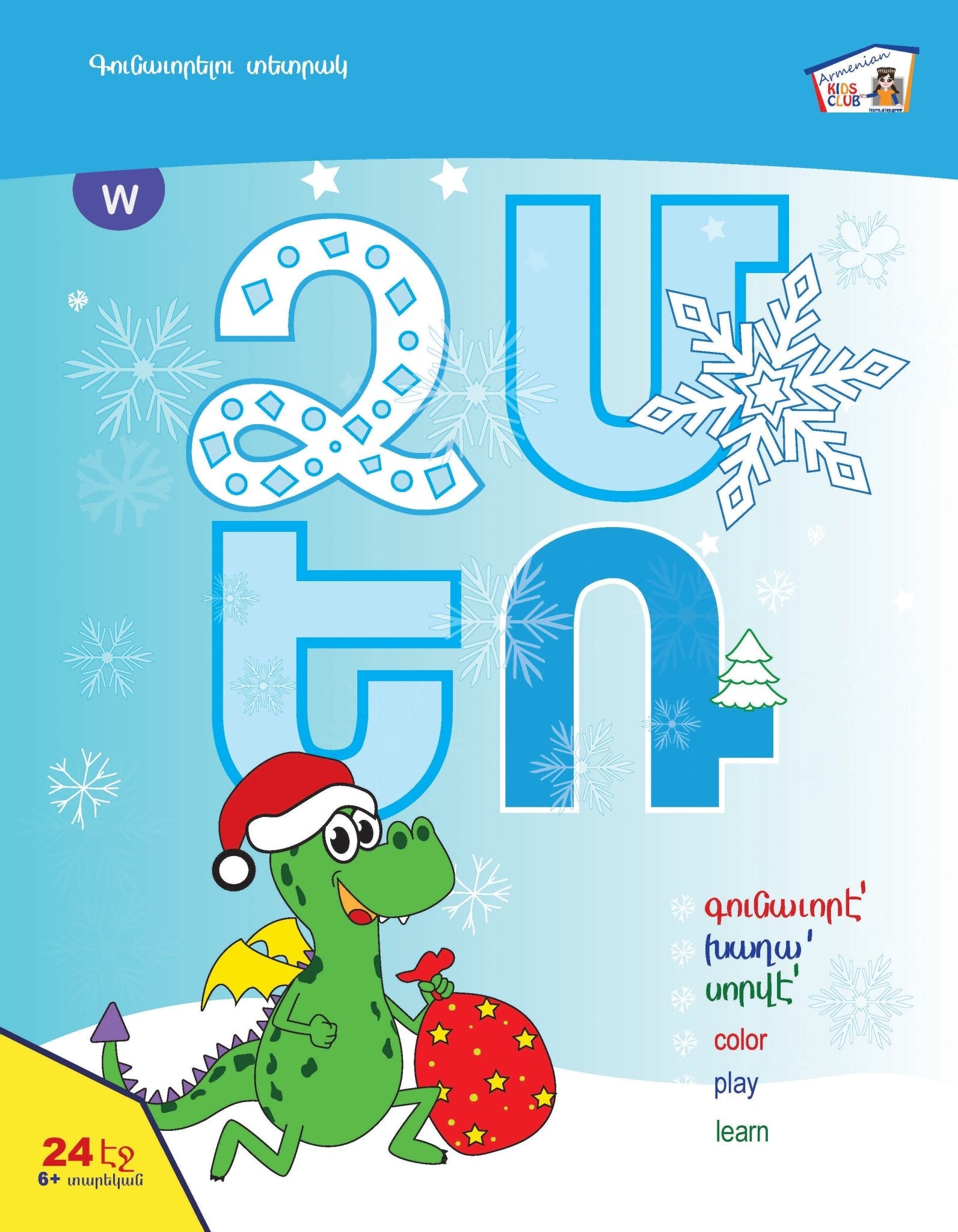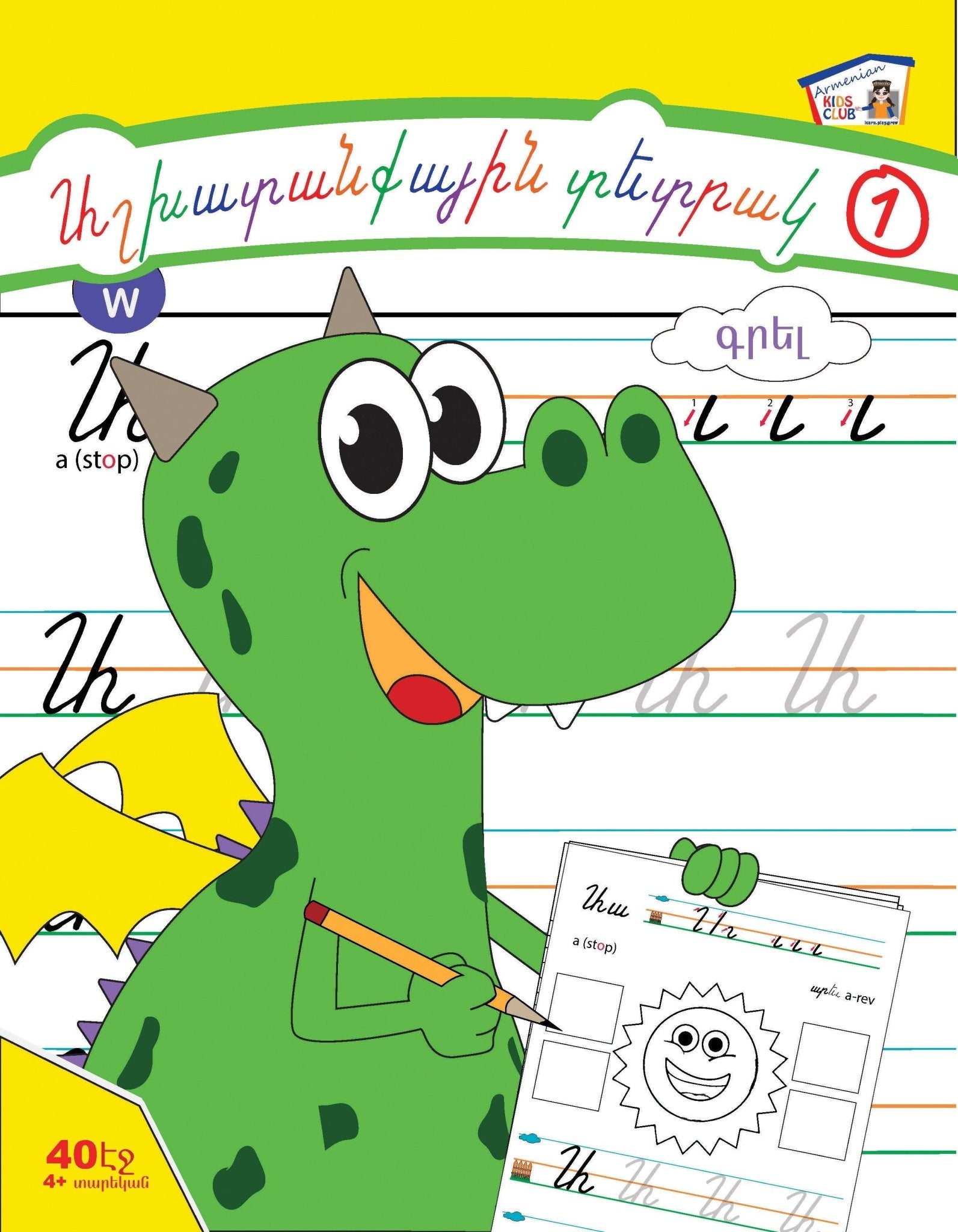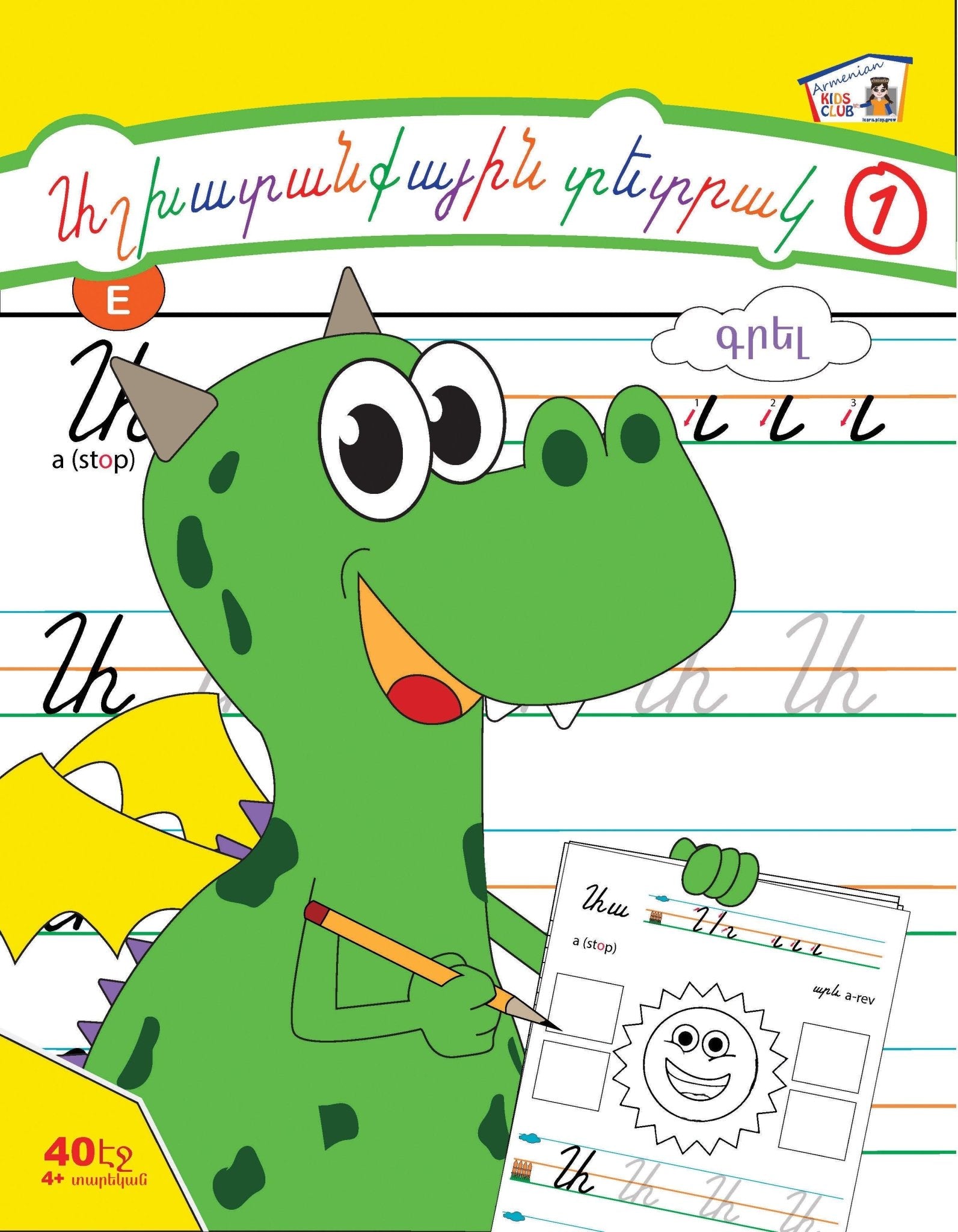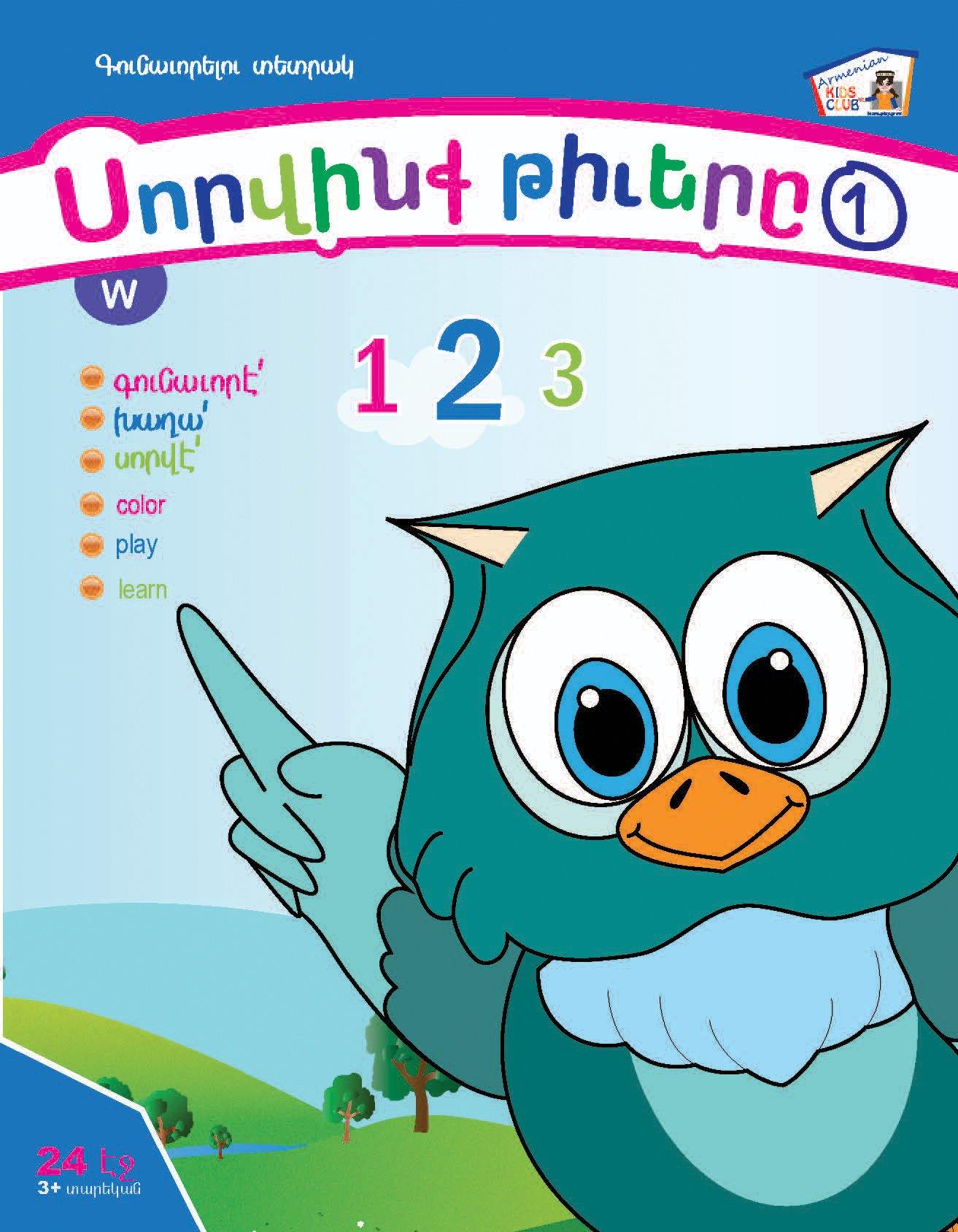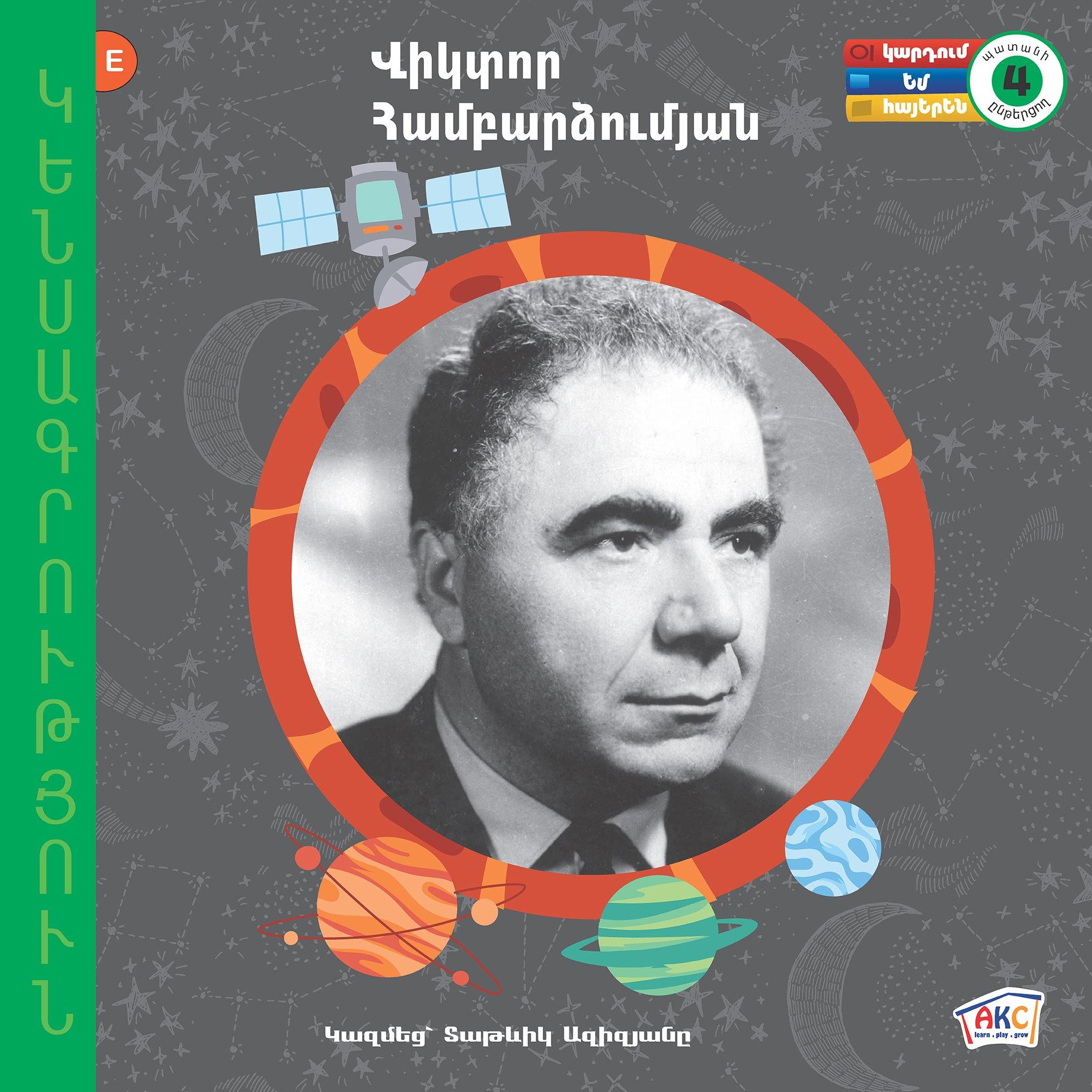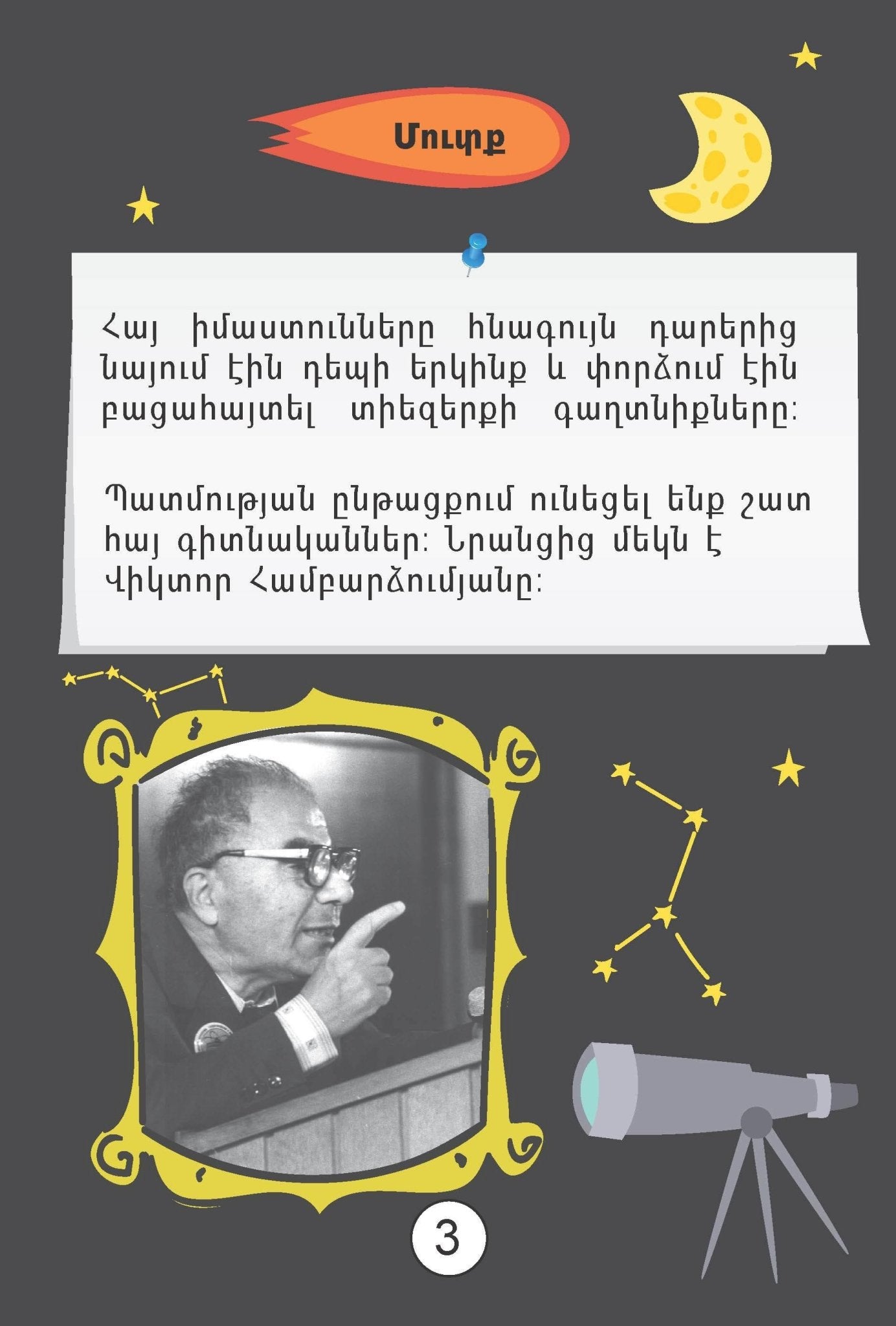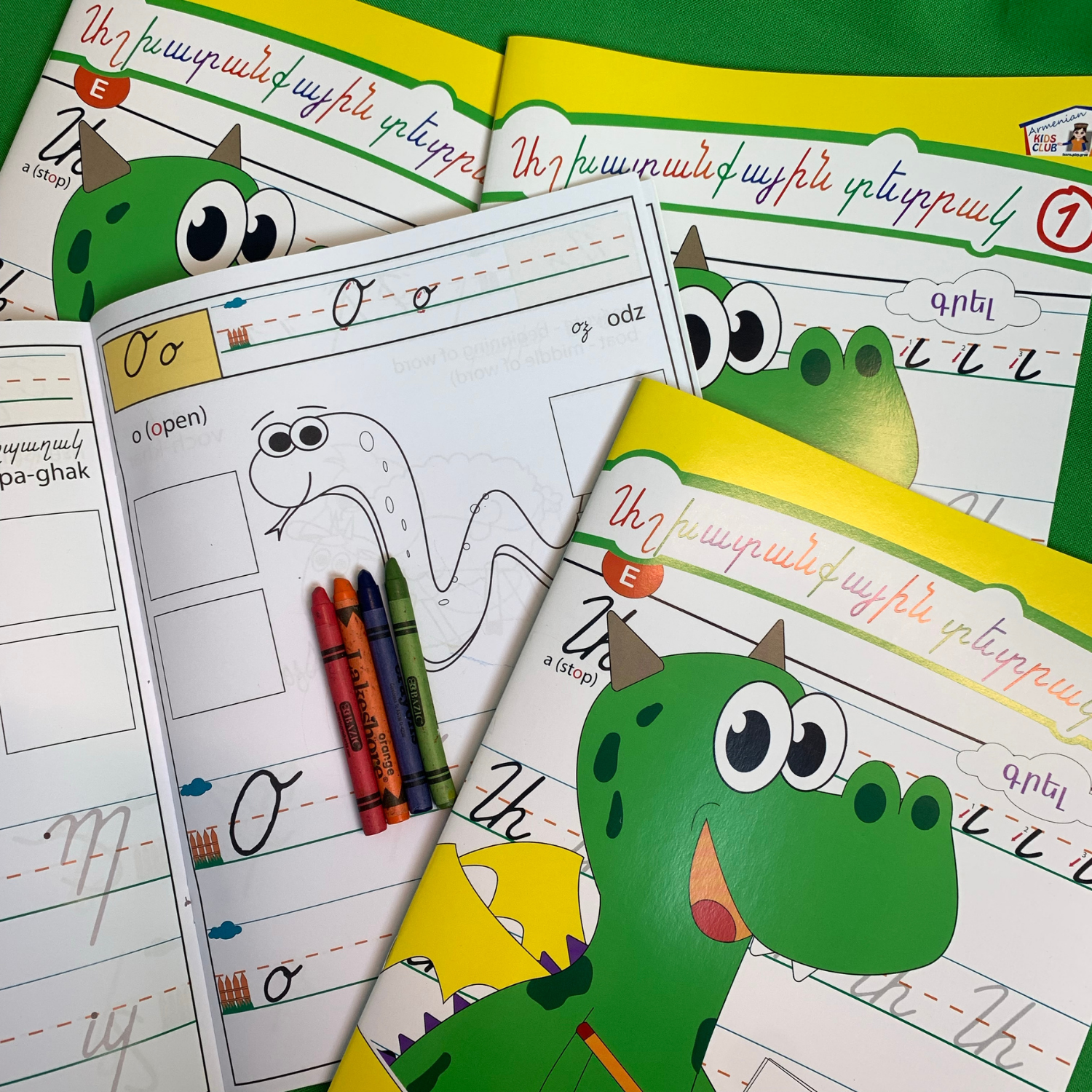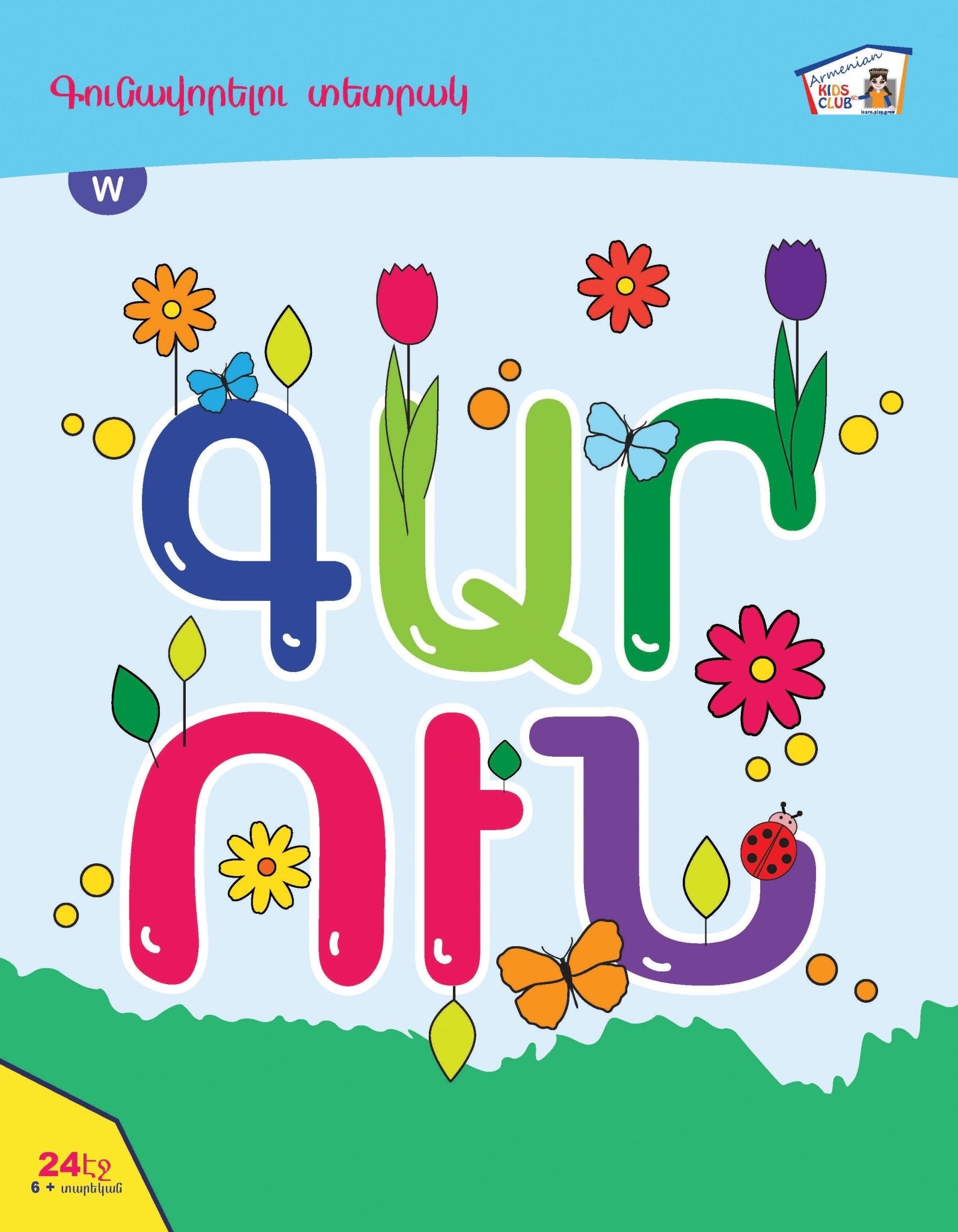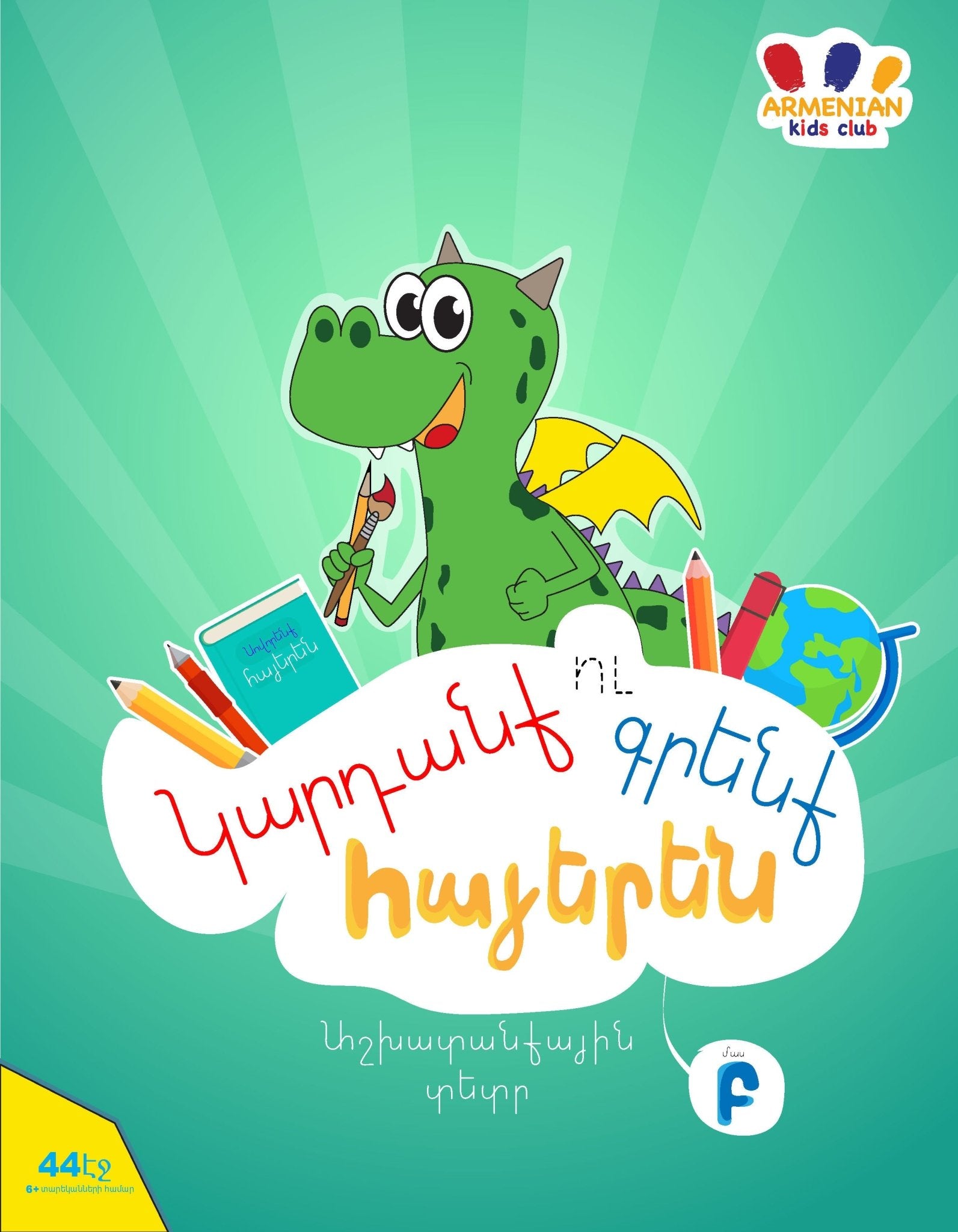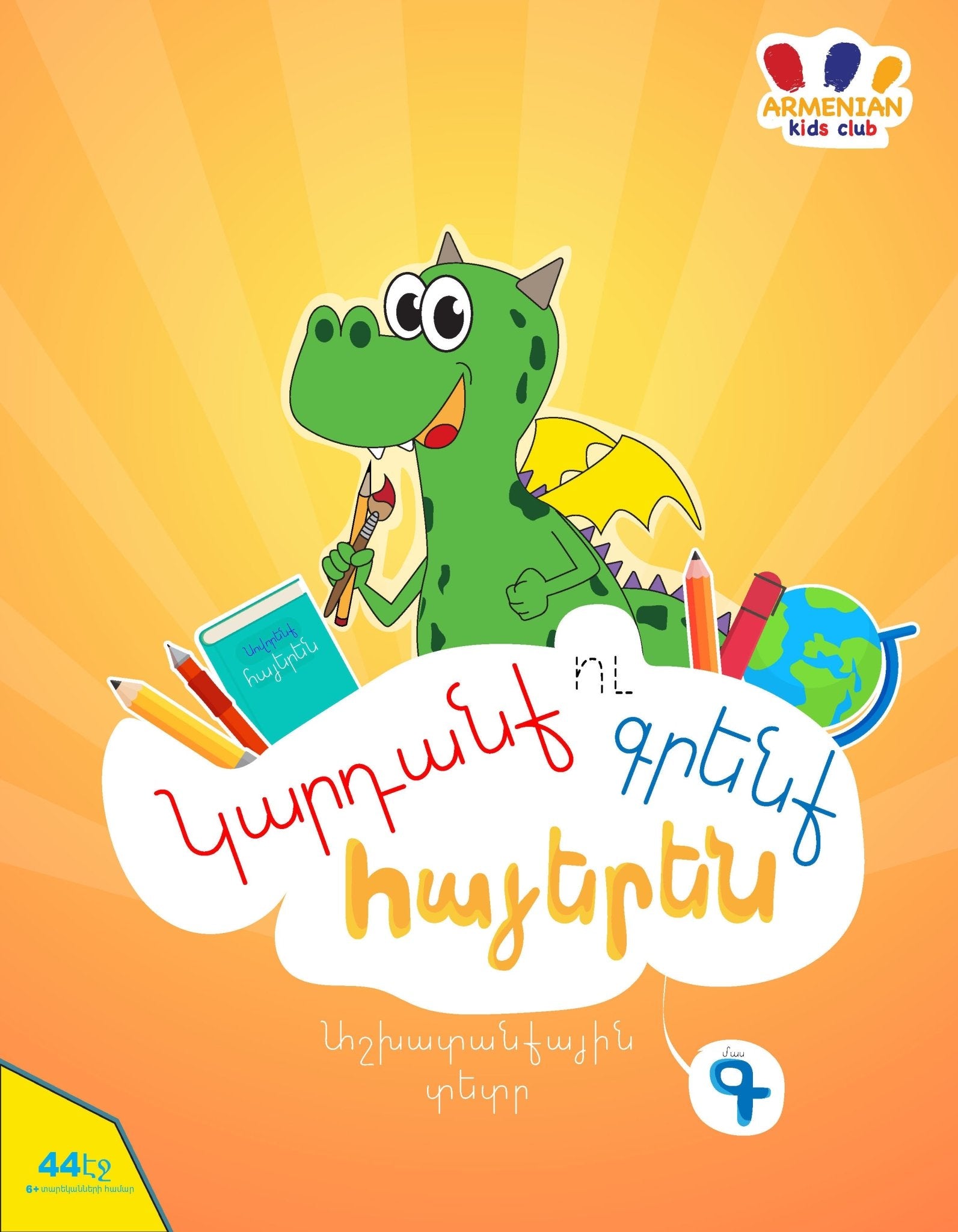Teacher Approved Resources
Armenian schools across the USA and abroad use these in their classrooms.
Popular Early Reading Books
Want to Learn Armenian? Begin with our 3-step path.
Every journey starts with the alphabet. Kids begin by tracing and recognizing Armenian letters through fun, hands-on activities. Our alphabet workbooks and flashcards make it easy to build a strong reading foundation from day one.
Once the alphabet feels familiar, it’s time to read short words and phrases. Through engaging storybooks and beginner lessons, children start connecting sounds, letters, and meaning—all while growing their love for reading in Armenian.
Browse By Category
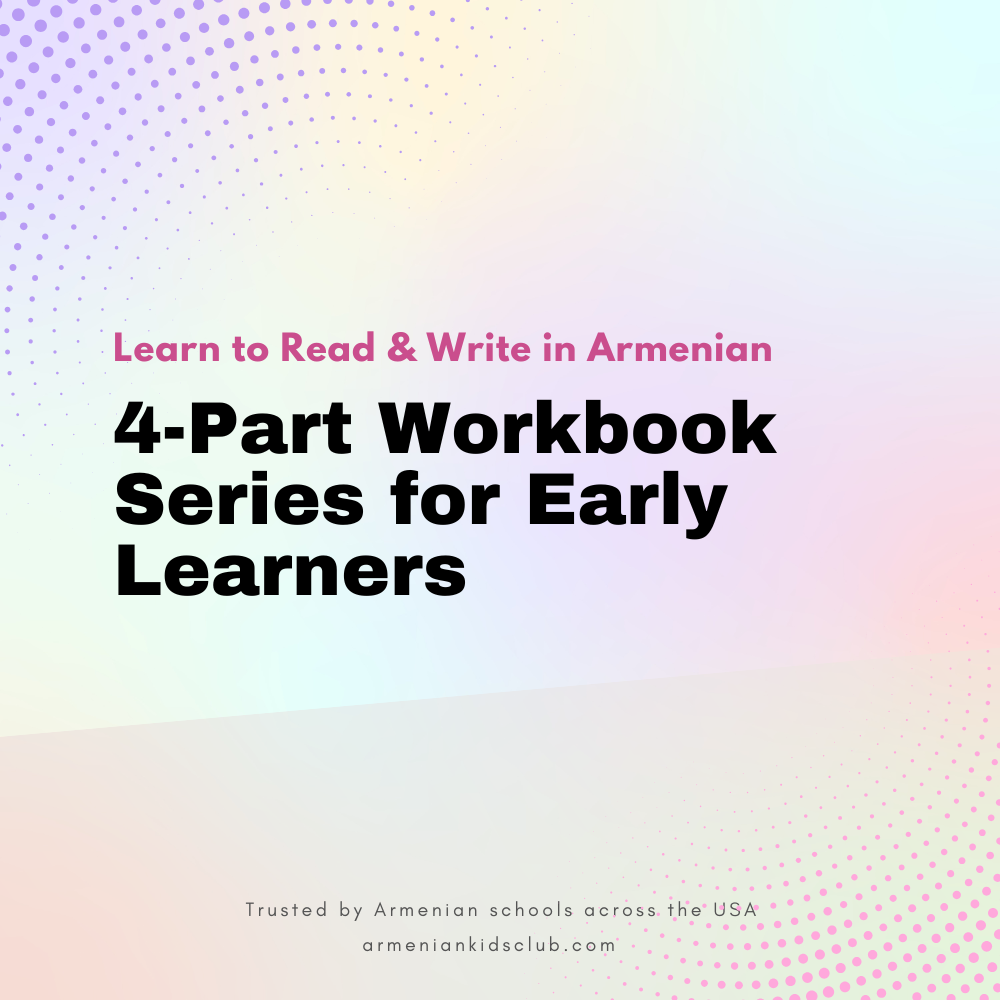
4 Part Alphabet Series

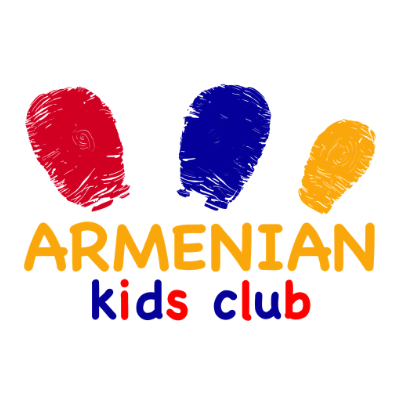
Armenian Kids Club Has Been In Our Hearts Since 2014
AKC was born out of our own needs back when we had our firstborn and noticed the lack of Armenian educational resources for parents. It's grown to now only serve parents but educators worldwide!
Based in Los Angeles
5.0 Review Score
50+ Published Resources
Eastern, Western, & Eastern with Mesropian Orthography
Loved by Schools & Families
"Wonderful products for anyone looking to keep their kids interested in the Armenian language and culture.
I purchased some workbooks for my son who loved how colorful and engaging they are. Not to mention amazing customer service. Highly recommend."
"The 'Read and Write Armenian’ 4-part workbooks are excellent! Colorful, modern imagery. Simplistic, engaging narratives. Helpful guidance and practice to develop proper penmanship. The books are laid out with a good structure and cadence for mastering the frequently used letters and incorporating those used less to become increasingly familiar. These are very valuable resources!"
"Thank you Armenian Kids Club for the awesome resources to learn Armenian. The workbooks helped my son learn to write correctly and neatly. The reading books are great; they are engaging. The kids love reading them and looking at the colorful pictures. The flash cards helped my son to practice the alphabet and have fun at the same time. There are printables for more practice. The tiny puppets were my son’s favorite. Thank you for the exceptional customer service, quick delivery, and the wonderful resources.
We love Armenian Kids Club!"
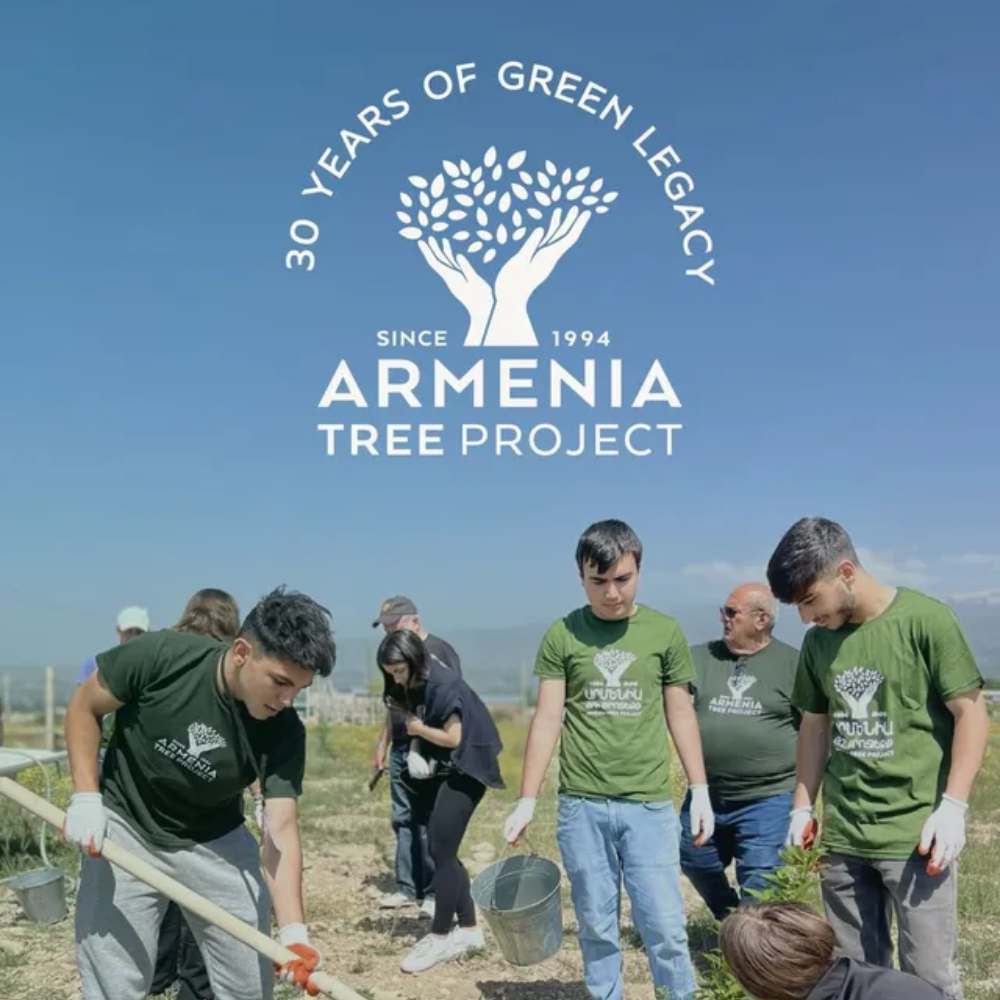
Incredible Results!
- 1,850+ communities revitalized
- 74 full-time & 150 seasonal workers
- Operating in Armenia & Artsakh
- 8M+ trees planted since 1994

Digging Tough Soil
Looks pretty rocky, but best believe these trees are resilient and will grow!
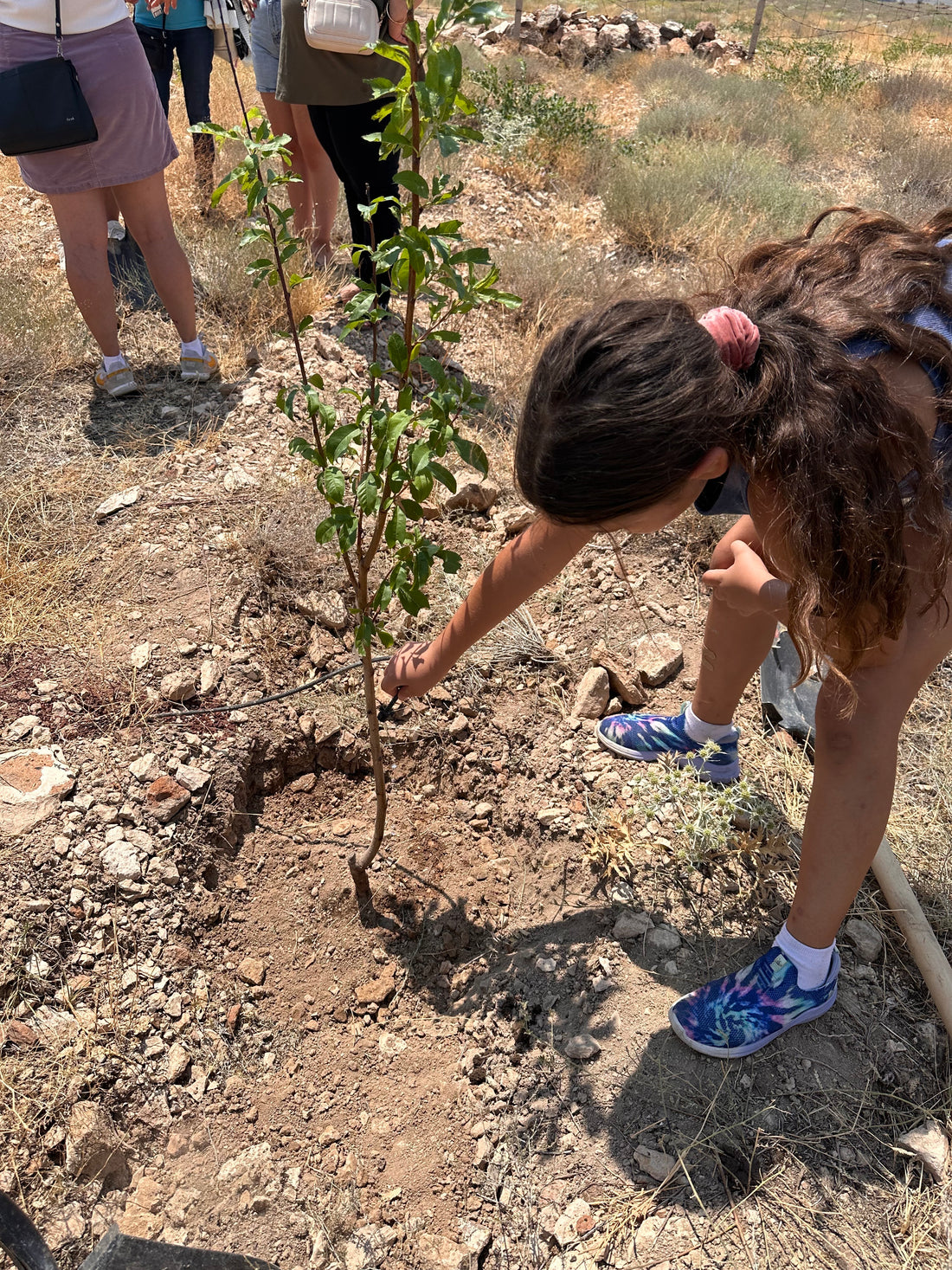
Watering Baby Tree
After planting, the final step is to obviously water the baby tree. :)
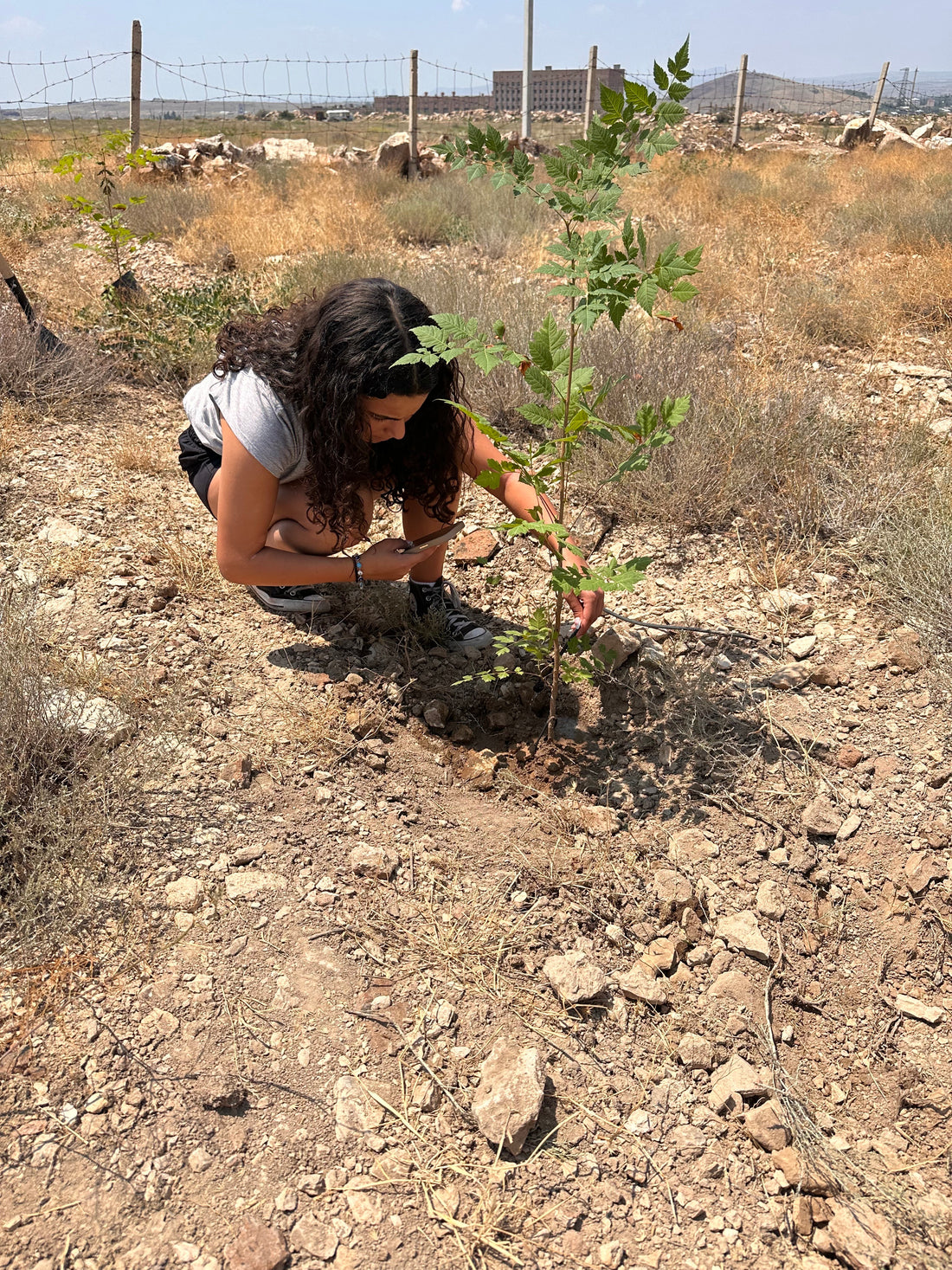
Last Plant Is set
Nairi is making sure her plant has the water source it needs to grow!
Interesting Reads From Our Blog
How to Teach Armenian Handwriting to Kids
Teaching your child Armenian (հայերեն) handwriting opens doors to their cultural heritage while building fine motor skills. Whether you're preserving family traditions or introducing Armenian for the first time, learning Armenian alphabet handwriting creates a real connection to one of the world's oldest writing systems. With the right approach, patience, and practice materials, your child can master the elegant curves and distinctive shapes that make Armenian letters so unique. Practice time using Armenian tracing worksheets Why Learning Armenian Handwriting Still Matters In a digital world, handwriting might feel “old-school,” but for Armenian families and Armenian schools, teaching kids to write by hand still matters a lot. Armenian handwriting practice helps reinforce the link between what a child sees and what their hand does, which makes it easier to recognize letters and eventually read with confidence. Research on handwriting in early literacy shows that physically writing letters improves memory, spelling, and reading fluency. It’s also cultural. The Armenian script, created by Mesrop Mashtots in the 5th century, carries more than 1,600 years of history. When a child learns to write in Armenian, they’re not just learning letters — they’re continuing a tradition. For families in the diaspora, the act of writing by hand becomes a way to stay connected to identity and heritage. And on a very practical level: handwriting improves focus, discipline, and confidence. Tracing Armenian letters and copying them builds patience, structure, and pride (“I wrote this myself”). That kind of motivation keeps kids coming back. Understanding the Armenian Alphabet Structure (Eastern vs Western) The Armenian alphabet contains 39 letters in modern use, including 8 vowels and 31 consonants. Both Eastern Armenian and Western Armenian use the same letters, but many letters are pronounced differently between the two dialects. How many letters are in the Armenian alphabet? The original Armenian alphabet was created with 36 letters. Over time, three additional letters were added, bringing the total to 39. Unlike English, where some letters can represent multiple sounds, Armenian is largely phonetic: most letters map cleanly to a single sound. Eastern vs Western pronunciation differences This is one of the main things that confuses parents. The letters are written the same way in Eastern and Western Armenian — so your child will write the same alphabet either way — but some sounds change depending on dialect. Example differences you’ll see: Letter Eastern Armenian Western Armenian Գ գ "g" as in "go" sounds closer to "k" Պ պ "p" often heard like "b" Թ թ aspirated "t" can be closer to a "d" sound So which version should you teach? For handwriting, either is fine. The writing is the same. Just be consistent with pronunciation so your child doesn’t learn two different sounds for the same letter in the same week. If your home / school / community mostly speaks Western Armenian, stick to that pronunciation. If you’re teaching Eastern Armenian (as spoken in Armenia today), stick to Eastern pronunciation and modern spelling rules. If you want visual practice by dialect, explore our Armenian alphabet workbooks — we offer Eastern Armenian, Western Armenian, and Mesrobian formats so kids can learn in the style they actually hear at home and in school. Step-by-Step: Teaching Kids to Write Armenian Letters Start with posture, grip, and stroke control Before you even introduce a letter, set up good habits: Feet flat on the floor Pencil held with relaxed fingers, not in a tight fist Paper slightly angled, not straight up-and-down Armenian letters have a lot of curves and hooks. If a child squeezes the pencil or writes with a bent wrist, every letter becomes harder than it needs to be. Slowing down here actually speeds them up later. Teach basic shapes before full letters Most Armenian letters are built from repeating shapes (little hooks, loops, circles, vertical stems). Have your child trace those shapes first. Think of this like “warm-up drills.” This builds muscle memory and makes the full alphabet feel less scary. Introduce letters in a smart order, not A-to-Z Don’t feel pressured to teach the alphabet strictly from Ա / ա onward. Some letters are visually simpler and more familiar, so they’re great first wins. Large round forms like Ա (A), Ո (Vo/O), Ս (S) are easier for beginners than more detailed letters with multiple strokes. Here’s a simple pattern: Trace dotted versions of the letter. Copy the same letter next to the model. Write from memory on an empty line. This trace → copy → recall sequence is exactly how our Armenian handwriting workbooks are structured, because it gives a child fast feedback without feeling like a test. Use Armenian handwriting worksheets consistently Printable Armenian handwriting worksheets are one of the easiest tools for parents. A strong worksheet will include: Numbered arrows that show stroke order Uppercase and lowercase versions of the same letter Guidelines so letters don’t “float” or collapse Space to try the letter independently, not just tracing One simple word or picture in Armenian using that letter, so it feels meaningful You can use individual sheets for short daily practice (5–10 minutes). That’s more effective than a long “handwriting session” once a week. Printable Armenian Handwriting Worksheets (Free PDF) Having reliable practice sheets at home makes a huge difference, especially for families who don’t have access to an Armenian day school. This is where printable PDFs shine. We recommend starting with: Basic tracing pages for individual letters Letter + sound pages (e.g. the letter + a word that starts with it) Copy-the-word lines, where kids rewrite a simple Armenian word Review sheets that mix 3–4 letters the child already learned You can download starter practice sheets at home and print as many copies as you need. We also offer Eastern Armenian, Western Armenian, and Mesrobian variants, so you’re not forcing a child to practice in the “wrong accent.” Browse our Armenian alphabet workbooks or check out our printable worksheets to get started. Common Handwriting Problems (and How to Fix Them) Similar-looking letters Some Armenian letters look very similar to beginners. Kids may mix up letters that only differ by a tail or hook. You can fix this by practicing those “confusing pairs” side by side and color-coding the part that’s different. Letter size and spacing Inconsistent size is normal at first. If letters are too big or words all run together, switch to lined or grid-style paper. Visual boundaries help the child learn where the baseline is and how tall each letter should be. Wrong stroke order Armenian letters have an intended stroke flow. When a child invents their own stroke order, the letter becomes harder to repeat neatly. Slow them down and have them trace arrows or say the order out loud while they write (“down, loop, tail”). Repetition builds smoothness. Make Armenian Handwriting Fun If handwriting feels like homework, kids check out. If handwriting feels like play, they stay in it longer — and longer practice = faster results. Ideas you can use: Rainbow tracing: Trace the same Armenian letter using five different colored pencils. Build the letter: Shape letters out of Play-Doh or clay before writing them. Letter hunt: Open an Armenian storybook and ask the child to circle every instance of today’s letter. Mini words: After they learn a few letters, help them write a tiny “note” in Armenian to a parent or grandparent. When handwriting connects to something personal — family, stories, birthday cards in Armenian — it sticks. Next Steps in Your Child’s Armenian Learning Journey Once your child can write a few letters confidently, start blending handwriting practice with early reading. Short Armenian storybooks are perfect here. Seeing the same letters they just wrote now showing up in real words helps reading click much faster. You can explore our Armenian storybooks for kids to introduce simple words, repetition, and cultural themes in both Eastern and Western Armenian. Reading and writing together is what turns letters into language. And most important: keep it consistent, not perfect. Ten focused minutes a day of Armenian alphabet handwriting beats one stressful hour once a week. Ready to keep going? Download our free Armenian handwriting practice sheets or explore the full Read and Write in Armenian workbook series to give your child a strong, confident start in Armenian. For historical and linguistic background on the Armenian alphabet, see this overview of the Armenian alphabet.
Reading In Armenian
Reading in Armenian has many challenges. When I was expecting my first child, I immediately began my search for Armenian books to read to my future child. Some of the books were outdated in their content, some had unpleasant illustrations, some books were in Eastern Armenian, some in Western Armenian and some were lovely and amazing, but very expensive. I bought as many books as I could afford. Many parents in the diaspora face these challenges when thinking about reading in Armenian. I became obsessed with understanding the challenges and ultimately Armenian Kids Club was born to address as many of the hurdles as possible. I asked teachers who are using our books in their classrooms, which parts of our books were appealing to them. The answer was the big font, the dazzling illustrations, and the leveled reading books in the Reading In Armenian Series. Our Reading In Armenian book series created by Armenian Kids Club aims to match an individual child's reading level with engaging and educational text. There are 4 levels meant to help guide students and help with fluency and vocabulary. Whether your little reader is just starting to identify the letters in the Alphabet, or they are reading simple sentences on their own, our books will help them become great readers. Now that I have three children, each at a different reading level, I test the books out on them and recently I wrote a book called “Gohar/Kohar and Puppy”, which they all approved. This book is a level 2 and is for children who have already identified the sounds for all the letters and are beginning to read on their own. This book uses repetitive words and simple sentences. Two friends are looking for their lost ball to play with. As they look around the house, the reader learns the names of the rooms. As they face a challenge, the reader learns that small obstacles can be overcome. Jenya Hakopyan illustrated this story with colorful and delightful characters that your little readers will love. Find this book and others at www.armeniankidsclub.com
Project Make A Friend
Project Make A Friend is a Pen Pal program between Armenian children from all around the world. Through the project, we hope to answer the question, "why should I learn Armenian?" Armenian Kids Club has a mission to promote and encourage Armenian language literacy, and to connect the children of the diaspora with Armenian language, culture, and history.
Vardavar: Fire hose Face Off
It's summertime, do you know what that means? Vardavar is around the corner. I want to share a little about the origins of Vardavar and my experience of Vardavar in Yerevan.
